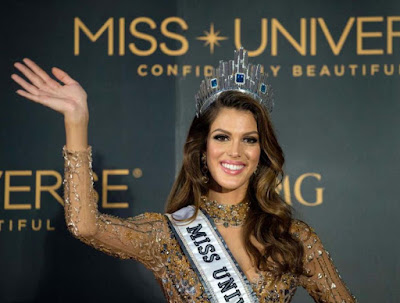Turban As Motif
As is the case with many world religions, in Sikhism we find that patriarchy is deeply embedded in the traditions and texts of the faith, even as Nikky-Guninder Kaur Singh tells us that Sikh Gurus “empathized” with women oppressed and in turn, “emphasized gender equality.” This, in some ways, contradicts Geetanjali Singh Chanda and Staci Ford’s piece, “Sikh Masculinity, Religion, and Diaspora in Shauna Singh Baldwin’s English Lessons and Other Stories.” Chanda and Ford state quite clearly that “The family, specifically the hetero-normative family, is at the heart of the performance, the pedagogy, and the continuity of specific notions of a religio-cultural masculinity.” This leaves the Sikh male in a difficult place, especially here in America where the turban often subjects men to physical attack and even death in this post-9/11 landscape.
Chanda and Ford describe ads featuring Sikh males prominently displayed in the bright lights of Main Street America: Times Square in New York City. Where once there was disappointment at the lack of presence in American culture for Sikhs, Chanda and Ford now charge that this constitutes objectification and commercialization of the Sikh image. Well, this begs the question, what exactly do they want? Part of what has opened the door to violence against Sikhs is the lack of cultural inclusion in America. In short, Americans are ignorant about Sikh beliefs and culture, and while this is not the fault of Sikhs, the charge that they constitute an “Other” in American society must be overcome and negated. Americans need to be educated about Sikhism and its followers. As Chanda and Ford state in their thesis, the appearance of a Sikh male on a billboard in Times Square encourages the idea that “lives and histories are connected (and often irrevocably changed) in the transnational flow of people, capital, and histories.” For modern Sikhs, this inclusion may be more welcomed than more traditional adherents, and the alt-right movement might preclude welcoming our turbaned brethren as fully participatory Americans, but like the issue of patriarchy in this religious tradition, those who fail to understand these modern times—and a woman’s role in a modern faith—are reaching back centuries for a sexist reading that is no longer valid. “Turban-wearing Sikhs,” Chanda and Ford tell us, “constitute a visible subgroup of the South Asian Diaspora.”
What makes Chanda and Ford’s essay unique is its focus on three fictional stories and their impact in a feminist reading of Sikh literature that sheds light on Sikh masculinity with depth and insight. This kind of reading is long overdue in many patriarchal religions. Specifically, the author of the three texts, Shauna Singh Baldwin, “considers men and masculinities at various stages of life and in diverse contexts—social, familial, and cultural—from a feminist perspective.” She also utilizes the theme of the past telling us what the present means within the context of literature and culture and even history. She opens the door to questioning, and questions always lead, not to destruction, but understanding. Make no mistake, the Sikhs murdered in acts of violence after September 11th were victims of misunderstanding; they were killed, quite simply, because they wore turbans, and most Americans, erroneously, believed turbans equaled Muslims. Chanda and Ford applaud Singh Baldwin’s use of fiction to present these ideas because the lens of story allows us to walk in the shoes of another. In her work, she writes “about men as complex and multifaceted beings who are, themselves, victims of racism and economic imperatives in a global marketplace.” The stereotype of the turbaned 7-11 store clerk has some basis in reality; Sikhs often are small business owners in communities big and small across the country. In many of these communities, they are treated as the “Other,” someone who comes into the neighborhood to take economic advantage of those who live there. The truth is that they are a vital part of the American economy, and are often victimized through robbery and violence and are resented by the communities they serve.
Another aspect of this that Chanda and Ford discuss is patriarchal notions within Sikhism. It seems that Sikh traditions and discussions need to happen within the current patriarchal hierarchy in the faith. The stories as written by Singh Baldwin perform this function as well because she presents how these ideas challenge the family as keeper of the masculine flame. The family often reinforces patriarchal beliefs. She introduces “real men who are caught between cultures, shifting economic realities, and the varying generational expectations of mothers, wives and sisters.” She flips “the traditional script of literary texts, where more often men narrate women’s lives.” In one story, “Montreal 1962,” she presents a situation where Sikh immigrants were encouraged to come to Canada because North America needed skilled workers, and therefore, people overlooked race, at least initially, to bring in people to fill high tech jobs. Of course, this also exposed them to discrimination, as Latinos face in this country. There is always the prevailing notion that somehow these workers deprive native born citizens of jobs when in fact, these immigrant workers are often recruited to fill positions that others could not fill or do not wish to fill. Singh Baldwin calls these workers “exotic new Canadians, new blood to build a country.” What is clear both in history and culture is that immigration plays a key role in a healthy society, especially here in America.
The focus of this rising of Sikh culture is the turban. It is, in Singh Baldwin’s stories, a symbol of defiance, even when the wife takes it on, wrapping her “five meters” of cloth around her own head, adopting “a symbol of religious identity and manhood.” It is clear from the actions of the young wife in Singh Baldwin’s story that a woman adopting the turban is an acceptable evolution of gender roles in this new world. History and events by necessity change defined gender roles. In comparison, there is a continual debate about ordaining women priests or allowing priests to marry in the Catholic Church. Protestant and Anglican Churches are battling with the ordination of gay and lesbian clergy. Many reform Jewish congregations have female Rabbis. Times are changing, may be not at great speed, but with a consistent, plodding advancement that is difficult to ignore. Gender issues must be solved before we can tackle and defeat racism.
To illustrate this point, Chanda and Ford launch a discussion of honor killings and rape culture. Feminist writers have relentlessly explained that “notions of honor and shame fan the flames of revenge and violence in men but are carried out on the bodies of women.” In many ways, this is a product of gender codes, even the medieval Code of Chivalry governing the behavior of noble men with women. Still, such codes enforce the idea of women as victims and men as their saviors. It is interesting to note that men who do not live up to such codes are often dishonored and emasculated as punishment for failing to be manly men. Therefore, the lines between protective behavior and violence are blurred. A man must “protect the honor of the family even if it means killing his sister to do so,” Chanda and Ford write. This presents a significant paradox: can one preserve by destroying? In these Partition narratives Chanda and Ford discuss, it would seem so. In the ritual suicides of women who would rather “jump into a well” than “bring shame upon their village, family, or religion,” preservation of the honor in this manner is also acceptable? In the west, we reject ritual suicide, and therefore, we do not understand this concept. However, we hear about such acts more and more. Chanda and Ford talk about the United Nations report of “5,000 women and girls worldwide, across religions and countries [who] may be murdered each year by their own families.” Since those numbers come from 2010, I wonder if the total is not much higher now in 2016.
It is without a doubt that Sikh men face discrimination and emasculation in American society. But, men, in general, have a long history of attacking each other’s manhood when conflict arises. In English boarding schools, verbal, physical, and sexual abuse is commonplace. Males challenge the masculinity of other males with derogatory, emasculating language denoting female genitalia or homosexual labeling. Chanda and Ford cite many potent examples of this, including the male student deprived of his turban and made to play a female role with his long hair in a theatrical production. To a young man still developing his gender identification, this is devastating.
None of this is all that different from many societies, including American society. These gender “rules” are reinforced from a young age. As a teacher, I have had parents, all most always the mothers, plead with me not to give their sons low grades because this might make him “depressed” and “feel inadequate.” I’ve shopped in supermarkets where mothers, mostly white, treat their inattentive sons like husbands, asking them what they would like for dinner, and catering to their every whim or whine. Much of what has happened in the presidential election has to do with the questioning of gender roles. Trump has been characterized as a “real man,” (his Twitter handle is @realDonaldTrump) who will “make America great again” by sending Muslims and Latinos back where they came from while promoting some mythical past in our history where men were men and women had babies and serviced the men. This is a man who does not hesitate to discriminate against his daughter, whom, he has said, he would be dating if she were not his daughter. This is a man who does not consider groping a woman wrong and harmful if the groper has power. A powerful man can get away with such rapist encroachment, and if one is not a powerful man, he is less than a man.
In the end, Sikhism, like all other religions, continues to grapple with the role of women. Singh Baldwin, as Chanda and Ford note, uses the lens of fiction to create a discussion. Fiction allows the what-if. In fact, the what-if is built into the art, and if it can help religions, cultures, societies, and individual houses on our streets to come to grips with the issue of equality of men and women, then it is a good thing. For fiction is the dream-life of a culture, and although these dreams might often be nightmares of zombies or the horrors of war, our dreams can also show us a world that could be, a good world, not perfect, but more equal.




Comments
Post a Comment